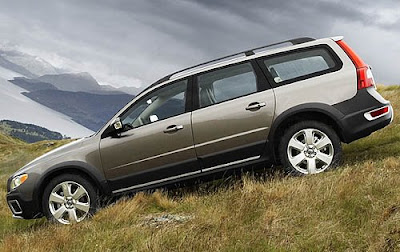
If you've seen my photo, you know that my boy racer days are (or should be, anyway) long over.
So imagine my surprise when, on my way to pick up my daughter from ballet, a car pulls up next to me at a stoplight and starts revving like crazy. I glance over and there are two teenage boys...in an older Mitsubishi Evolution...drooling over the new one I'm driving.
I roll down the window.
"Hey, dude! Nice car!"
(I'm still trying to figure out which would have been worse..."dude" or "sir".)
I say "Thanks, yours too.", roll up the window and accelerate normally when the light turns green. This mystifies the boys who roar ahead and fall back, finally timing things so we end up side-by-side at a stoplight about a mile further up the road. I roll down the window again.
"So, dude...wanna race?"
"No, thanks."
"But, dude! It's an EVO!"
Had the light not turned green at that very second, I probably would have gone all Ward Cleaver on them and stuff (oh, no...teenspeak is catching), explaining that flooring a lightweight car with 300 horsepower can have serious consequences as regards public safety, insurance and the privilege to hold a valid driver's license. I could even have explained that the Evo isn't a drag racer, it's a purpose-built rally car...
Look, this car is crazy fast. One-eighth throttle induces an involuntary "whoa!" the first time you do it. More than that and there are G-forces at work. This is the car that makes me glad I'm not in my 20s anymore because I'd probably be dead before I could post the review.
What impresses me most is what Mitsubishi did to transform the basic Lancer into the fire-breathing Evolution. It goes beyond a hot engine and stiff suspension. There's a brace built behind the rear seat to control (maybe eliminate is the better term) body flex. The Recaro racing seats are nothing short of awesome. And everything feels like it's been upgraded about seven classes from what you'd find in a stock Lancer.
Yes, there's a price for this kind of serious machinery...$38,290 base (a $2,000 Rockford Fosgate 650 watt audio system sent the test vehicle to a $41,740 bottom line). More than double a Lancer's sticker. If this is your type of car, then I can't imagine one better. Just be careful, okay?






















